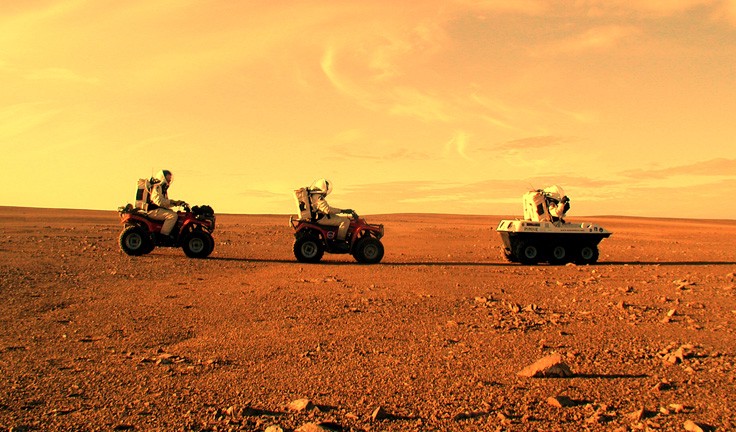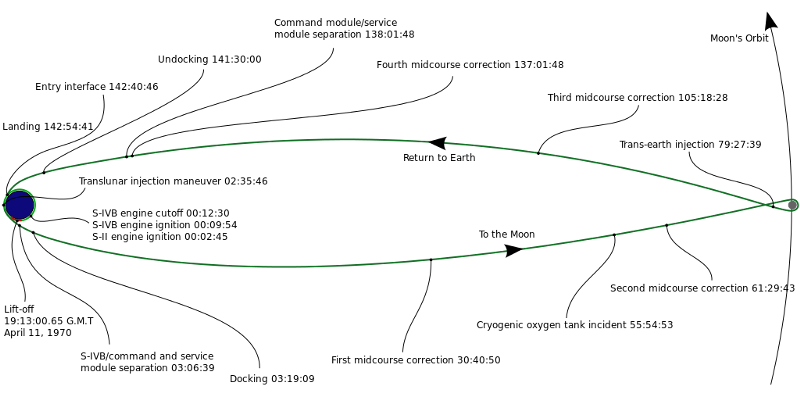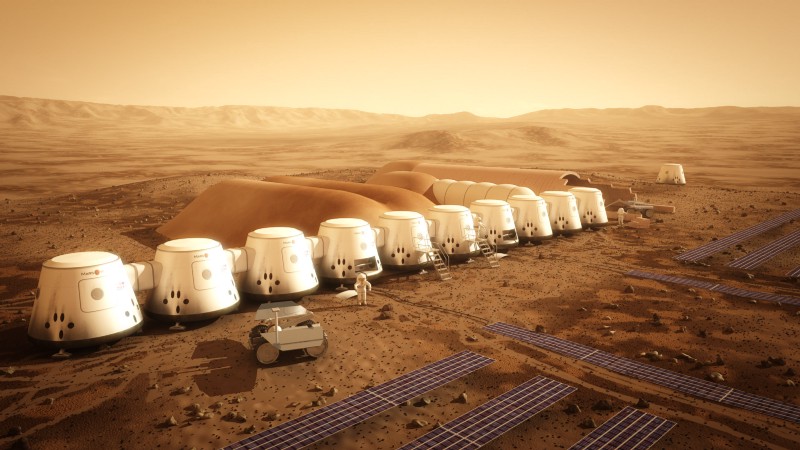Ask Ethan # 55: Will the members of the Mars mission cancel the flight?
If something terrible happens, will it be possible to return to Earth?
Sometimes I find myself looking at the moon and remembering how luck has changed in our long journey, thinking of thousands of people working to bring us home. I look at the moon and think - when will people go back there, and who exactly?
- Tom Hanks
There are few ideas that disturb our imagination, just like traveling beyond the limits of earth's gravity and in the depths of our Universe - to planets and stars. You send me your questions, as usual, and this week I am pleased to turn to the next question Joan asks:
Can the Mars One mission [Mars One] turn back halfway if they have any doubts? When they see our beautiful blue planet become smaller, while they fly to a dead and toxic planet, or when the solar wind and radiation exceed all safe limits.
')
Imagine: you have been chosen for a journey of a lifetime, and you are one of the first members of the team of the first manned mission to Mars!

None of the people traveled farther than the Apollo 13 team when they circled the far side of the moon near the lunar apogee, reaching the distance of 400,171 from the Earth’s surface on April 15, 1970. But when the first manned flight to another planet occurs, this record will be broken in just a few days.

The way that, with our current technology, is used to reach other worlds, consists of three steps:
Primary launch, overcoming gravity and launching a spacecraft at a sufficiently high speed (of the order of several km / s) relative to the Earth’s motion around the Sun.
Course corrections when small switching on shunting engines accelerate the ship towards the optimal trajectory.
Gravitational assistance, when we use the gravity of other planets orbiting the sun, to change the speed of our ship, each time increasing or decreasing it.
By combining these three steps, we can achieve any point with the help of today's rocket technologies, provided we have patience and careful planning.

Now the initial launch is a very difficult stage. A huge amount of resources is required to overcome the gravity of the Earth, to accelerate a significant mass to the first cosmic velocity, and to raise it through the Earth's atmosphere. All this should happen at the same time, and that is why we dream of a space elevator, with which one day we will be able to easily and reliably avoid wasting so much energy and fuel just by rising above the atmosphere.

But until it became a reality, only rockets remain for us. And this is not so difficult - just expensive in terms of the payload that we need to put into space if we want to reach another planet.
When we talk about a manned mission to Mars, we discuss several different plans. The most optimal one for one-way flight, which, if you are interested, minimizes flight time and the required amount of energy, implies an adjustment to the desired launch time.

Every 780 days, a window opens for a launch of approximately two months, when the Earth catches up with Mars in its orbit, and then the flight time to Mars will be about 243 days — eight and a half months. The difficulty is that on the way there you move with great speeds, and you do not have enough fuel with you to correct the trajectory.
Why not?
Because each extra kilogram of cargo increases the cost of launching a rocket, and reduces the amount of useful space of the ship for storing food, water and other supplies. As a result, there is less room for errors. If the notorious Apollo 13 mission did not plan to go down to the Moon, climb to reunite with the command module and return to Earth, they would not have enough fuel to adjust the course and return home.

If you are flying to Mars, and suddenly decide to return to Earth, using the fuel available on board to change the course for the return trip home simply does not work: it is too expensive in terms of fuel. In other words, Joan, answering one of your questions, if you are going to be killed by radiation - something that, in principle, it makes sense to worry, because people have never spent so much time outside the protective magnetic field of the Earth - you will simply die.
But if time did not press you, you would have enough food, water and supplies for survival, and fuel for the flight to Mars, you would have a chance to return home. This can be vital for the mission you are referring to - Mars One - because it is now planned as a mission for suicide bombers.

When you fly from the inner planet (Earth) to the outer (Mars), you have to stick to the Gomanovian trajectory [elliptical orbit used to transition between two other orbits, usually in the same plane]. Simply put, you need to increase the speed to the desired value at the right time to increase your distance from the Sun, while simultaneously reaching the final speed to meet the planet to which you are heading. In the case of a landing, you need to change the speed once more to begin the descent into the atmosphere of the planet, and this is what we plan to do for landing on Mars.
We have already successfully done this several times!

But what if we need to cancel the mission and go back home? There is a fantastic effect I have already mentioned: using the gravity of the planet to change the trajectory of a ship. That is, to change both the direction and speed of flight!
You remember the conservation of energy and think about how this is possible. After all, for any action there is equal opposition, so how can we make the ship and the planet interact so that our ship can change speed? The answer is that we have a third body - the Sun!


When the planet rotates around the sun, there is a lot of energy, gravitational and kinetic, in this system. When a third body participates in an interaction, it can receive energy, stealing it from the Sun-planet system, or lose energy, giving it to the Sun-planet system. The amount of energy used by the engines of the ship, usually does not exceed 20% of the received or given energy in the interaction!
That’s how the NASA Messenger spacecraft went into orbit around Mercury, donating a lot of energy through gravitational contacts, and that’s how the Voyagers and the Pioneers were on their way out of the Solar System!

So, if on your way to Mars you decide to return, your only real chance, given the amount of fuel that will fit on the ship, will be to use the gravity of the Red Planet to turn to Earth. This will translate into a journey lasting from 400 to 450 days. With no infrastructure between the planets, this is your best chance.

And although this is not exactly the answer that you wanted to get, it is precisely this answer that the laws of gravity, along with the limitations of technology, allow. To encourage you, I will say that the astronaut's maximum safe dose of radiation for a lifetime is calculated at 1 sievert, and even a journey of 450 days, up to Mars and back, will provide you with only 0.66 sievert. So this factor is unlikely to serve as a restriction, but as long as the planners of the manned missions to Mars do not take seriously the question of long-term survival, you will not find me among those who wish. A year in the Arizona desert - my closest approach to the dream of traveling to Mars!

This, by the way, is not Arizona, but Mars. But how to distinguish them?
If you make a decision early enough, even before you start the engines and leave orbit around the Earth, you can simply fly an ellipse and go back home. This would be ideal if something goes wrong when taking off. If you want to use the gravity of Earth, you will have several chances before the last window of opportunity closes.

But significantly slowed down, you will fly much further before you have hope of returning. Thank you for the great question, Joan, and if you want an answer to your question next time, send them to me!
Source: https://habr.com/ru/post/395285/
All Articles